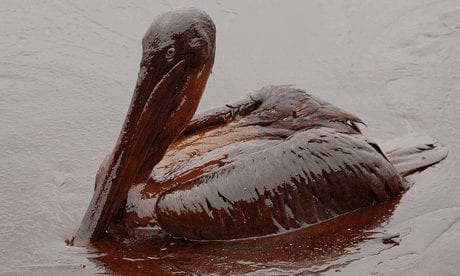Hilton Head Island Packet
May 9, 2017
BY SHARON E. RICHARDSON, Special to The Island Packet
and The Beaufort Gazette
Check with either an ecologist or an economist about offshore drilling, and you’ll find that their views dovetail perfectly: it’s a bad bargain for South Carolina.
Melanie Driscoll, my Audubon colleague, gathered and interpreted data for journalists and federal officials at ground zero in the Gulf oil spill in 2010.
Melanie wasn’t allowed to touch any wildlife drowning in the toxic goo that inundated 1,100 miles of coastline. The hardest part was watching helplessly as her childhood favorite birds gasped and perished in the oil.
More than a quarter-million laughing gulls were killed (36 percent of those in the northern Gulf of Mexico), along with 15 percent of royal terns and 12 percent of brown pelicans. Altogether, 1 million birds died in the acute phase of the spill.
Today, Melanie tells me, studies show ongoing problems with the livers and lungs of Gulf birds. Offspring of oiled birds have high rates of mutation.
Studies show birds malnourished where cleanup efforts removed food sources, and disoriented by chemicals in the oil — which is still washing up, seven years later. For migratory birds, malnourishment or disorientation is often fatal.
Melanie says the scale of the damage is so large that it’s not possible to make clear predictions about the impact on bird populations. We do know that Gulf dolphins aren’t expected to recover for about 40 years.
It’s sobering, right? It isn’t much different talking to an economist.
First, he’d whip out the oil industry’s rosy projections for drilling off our coast. Annual investment will supposedly rise to $2.7 billion over 20 years, with annual income rising to about $1 billion. But that income is just for a peak year. And it’s just while the oil lasts — about a decade, according to the same industry study.
Then the economist would shake his head. Our current coastal tourism generates revenues of $8 billion per year. Oil doesn’t mix with tourism. A study of Gulf counties with and without pipelines, refineries, etc., found that the presence of oil infrastructure cuts per-capita tourism dollars in half. We all know a bird in the hand is worth two in the bush, so where is the tangible economic benefit of risking a thriving sector?
If you think a spill couldn’t happen here, think again. There were more than 700 spills in U.S. waters from 2001 to 2015. In 2005, Hurricanes Katrina and Rita caused 11 million gallons to spill — the same amount as the Exxon Valdez spilled in Alaska. And storms in the South Atlantic are becoming more frequent and more intense.
We aren’t just worried about our own backyard. We are equally concerned with the fate of the Arctic National Wildlife Refuge. Some of our favorite South Carolina birds depend on the Arctic for their breeding grounds. Drilling in either place threatens their safety and makes as little sense in the refuge as it does off our coast.
Fortunately, South Carolina has many public officials who oppose or at least seriously question offshore drilling here. They include Gov. Henry McMaster; U.S. Reps. Mark Sanford, James Clyburn, and Tom Rice; and dozens of city and county officials.
On behalf of Audubon’s 17,000 members in South Carolina, I’d like to thank these people sincerely. Public officials who base their decisions on science and reason are worth their weight in gold.
Sharon E. Richardson is executive director of Audubon South Carolina.
Read more here: http://www.islandpacket.com/opinion/op-ed/article149513084.html#storylink=cpy


